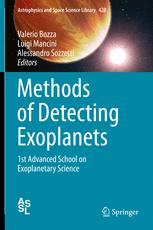

Most ebook files are in PDF format, so you can easily read them using various software such as Foxit Reader or directly on the Google Chrome browser.
Some ebook files are released by publishers in other formats such as .awz, .mobi, .epub, .fb2, etc. You may need to install specific software to read these formats on mobile/PC, such as Calibre.
Please read the tutorial at this link: https://ebookbell.com/faq
We offer FREE conversion to the popular formats you request; however, this may take some time. Therefore, right after payment, please email us, and we will try to provide the service as quickly as possible.
For some exceptional file formats or broken links (if any), please refrain from opening any disputes. Instead, email us first, and we will try to assist within a maximum of 6 hours.
EbookBell Team

4.7
96 reviewsIn this book, renowned scientists describe the various techniques used to detect and characterize extrasolar planets, or exoplanets, with a view to unveiling the “tricks of the trade” of planet detection to a wider community. The radial velocity method, transit method, microlensing method, and direct imaging method are all clearly explained, drawing attention to their advantages and limitations and highlighting the complementary roles that they can play in improving the characterization of exoplanets’ physical and orbital properties. By probing the planetary frequency at different distances and in different conditions, these techniques are helping astrophysicists to reconstruct the scenarios of planetary formation and to give robust scientific answers to questions regarding the frequency of potentially habitable worlds. Twenty years have passed since the discovery of a Jupiter-mass companion to a main sequence star other than the Sun, heralding the birth of extrasolar planetary research; this book fully conveys the exciting progress that has been achieved during the intervening period.